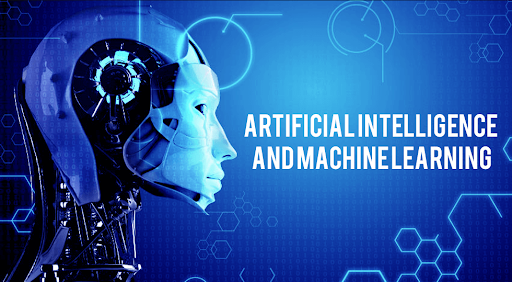To sign up for our daily email newsletter, CLICK HERE
How Artificial Intelligence is Revolutionizing Cyber Security and Protecting Against the Next Level of Hacking.
Hackers and cyber breaches have become more and more prevalent in recent years.
As a result, not only does every company need to spend a fortune protecting their data and assets, but almost every citizen of the world has been in danger of being a victim of hacking at some point.
It may seem like an insurmountable problem – but it doesn’t have to be! The latest cyber security trends show that the introduction of artificial intelligence is leading to far higher success rates in hacking prevention.

How AI is Improving Cyber Security and Protecting Us from Future Hacks?
The future of cyber security is very promising. We are already seeing AI-based security solutions that are helping us protect our data from hackers and other cyber criminals.
With the help of AI, we can predict the next attack and take preventive measures before it happens.
This will help us save time and money, as well as avoid potential risks that come with a possible hacker attack.
There are many industries that benefit from AI cybersecurity solutions. For example, AI-based cybersecurity solutions are already being used for fraud prevention and identity theft protection, but the scope of AI’s impact on security is vast.
AI is at the forefront of this fight against hacking, and it works by analyzing new cybersecurity vulnerabilities constantly in order to pinpoint any potential threats or breaches before they happen!
In the future, AI will be able to scan for malware in real time, alerting users about potential threats before any damage is done. This type of technology will also help “hacking investigators” to track down hackers who have stolen data.

How Can Cyber Security Benefit From Implementing Artificial Intelligence and Machine Learning?
AI and Machine Learning are giving computers the ability to learn without being explicitly programmed.
The power of machine learning has enabled a number of companies to create cyber security products that are more accurate and faster than traditional methods. The first use of lachine learning in cyber security was to detect malicious files.
As cyberattacks are becoming more sophisticated, the impact of AI and machine learning on cybersecurity can be observed in their ability to quickly adapt to changing threats and the reduced need for manual analysis of data logs.
One of the earliest products that used machine learning was Malwarebytes. Malwarebytes uses machine learning to identify specific types of malware, such as WannaCry and Petya ransomware.
Another product that uses machine learning is Symantec’s DeepSight Threat Prevention system. DeepSight, for example, uses machine learning to detect changes in behavior and identify malicious files.
If you are interested in learning more about machine learning or how to become a quality machine learning engineer, there are a number of courses and books on the matter.
My favorite book about machine learning is Hands-on Machine Learning with Scikit-Learn and TensorFlow by Aurélien Géron.

AI Applications in Cyber Security for Enterprise Customers
Cyber Security is becoming a big issue for organizations, especially those in the enterprise. With the increasing number of cyber attacks, it has become more important for organizations to take proactive steps to protect themselves.
There are many ways in which AI can be used to safeguard an organization from cyber attacks.
One way is by using AI-powered cyber security solutions. These solutions help detect and prevent cyber attacks by continuously monitoring networks and data centers for any anomalies or unusual activity.
They also provide protection against ransomware and other malware that could infiltrate an organization’s system and cause havoc.
If you believe you have been a victim of a cyber attack, you can use a FREE Ransomware Response Checklist to limit the damage!
Another way in which AI can be used to safeguard an organization from cyberattacks is by using it as a firewall between the internet and a company’s data center or network. This can be done through installing

Changing the Face of Cyber Security with Deep Learning and AI
In the past, cyber security was a relatively simple task. The hacker would have to guess an individual’s password and then break into their account.
Today, the cyber security landscape is much more complex with attackers using machine learning and AI to automate attacks.
The problem is that the human brain can’t keep up with the rate at which new types of attacks are created by hackers.
This is where artificial intelligence and deep learning come in handy because they can analyze data from a variety of sources in order to predict new types of attacks.
Cyber prevention is an important part of cyber security.

The Limitations of Using AI and Machine Learning for Cybersecurity
Resources
In order to build and maintain AI systems, businesses must invest a significant amount of time and money in resources such as computing power, memory, and data.
Data Sets
AI models are trained using learning data sets. Security teams must obtain access to a wide range of data sets containing malicious codes, malware codes, and anomalies.
Some businesses simply do not have the resources or time to collect all of these accurate data sets.
Hackers
Attackers test and improve their malware in order to make it resistant to AI-based security tools. Hackers use existing AI tools to develop more advanced attacks and to penetrate traditional security systems.
Neural Fuzzing
Fuzzing is the process of testing large amounts of random input data within software to find flaws. Neural fuzzing makes use of artificial intelligence to test large amounts of random inputs quickly.
Fuzzing, on the other hand, has a positive side. Hackers can learn about a target system’s flaws by gathering information using the power of neural networks.
Microsoft created a method for using this approach to improve their software, resulting in more secure code that is more difficult to exploit.
The Bottom Line
In this article, I discussed how AI is improving cyber security and protecting us from future hackers.
You’ve learned about the different types of AI applications in cyber security, as well as how deep learning and AI are changing the face of cyber security. In the end, I talked about some limitations of AI and Machine Learning.
AI and Machine Learning are being used extensively in cyber security, which is a trend that will continue in the future.